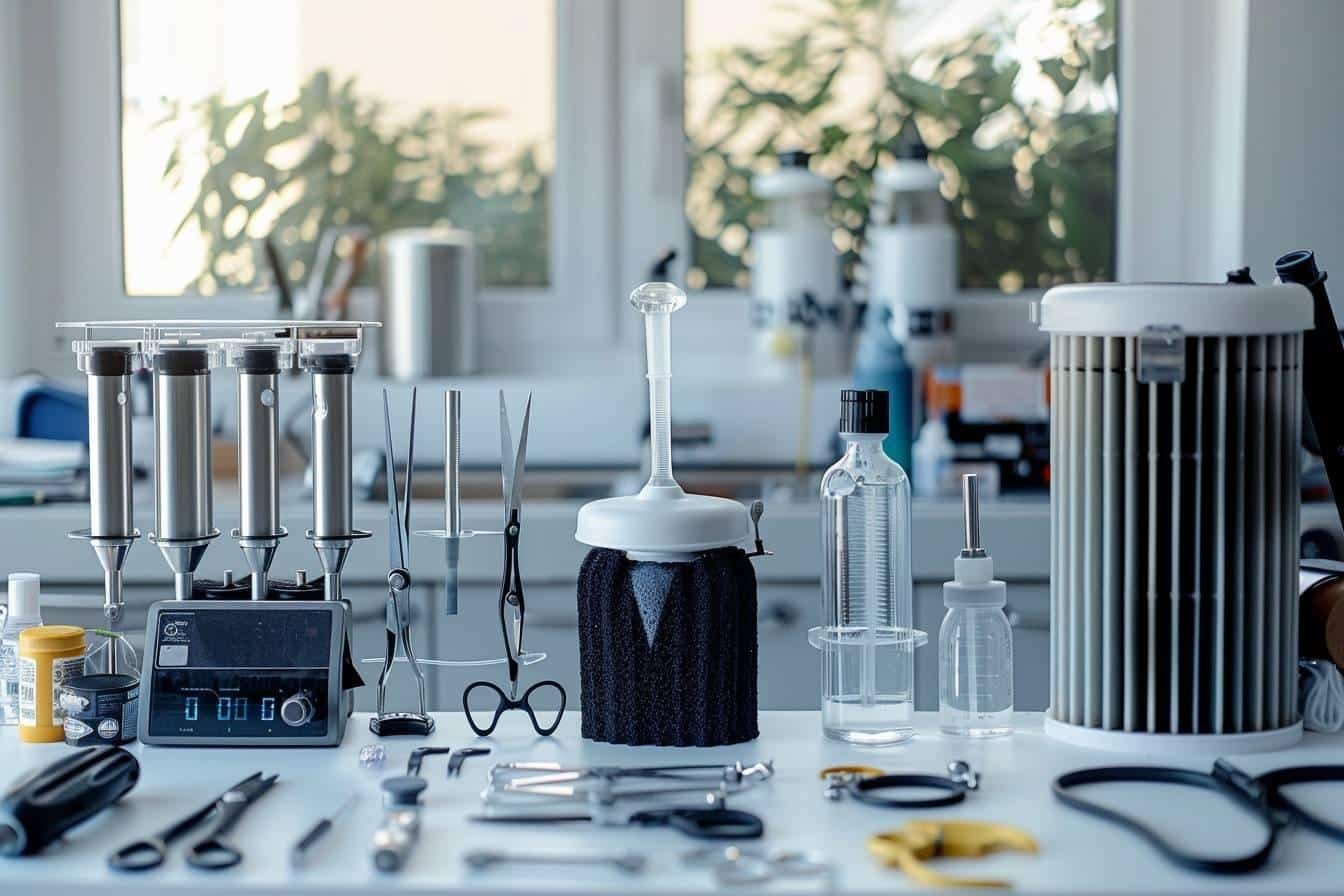The article in brief
Aquascaping competitions are real showcases of aquatic creativity, offering enthusiasts the opportunity to showcase their talent. Here are the key points:
- Different types of competition: internationalEuropean and national
- Various categories: nano, medium, large, paludarium, wabikusa
- Winning techniques: consistent theme, healthy plants, creating depth
- Assessment based on photography and specific criteria
- Opportunity for development and recognition in the industry
Ah, the aquascaping competition ! What a fascinating subject! As a pet shop floor manager, I can't help but get excited every time I talk about it. These competitions are real showcases of aquatic creativity. Let me guide you through this interesting world where art and nature meet underwater.
The different types of aquascaping competitions
You may not know it, but there are a multitude of aquascaping competition around the world. Each has its own particularities, but all share a common goal: to promote this unique water art and stimulate the creativity of participants.
International competitions
Among the most prestigious competitions are the IAPLC (International Aquatic Plants Layout Contest) and the AGA (Aquatic Gardeners Association). These competitions attract participants from all over the world, creating a real artistic emulation. I still remember my first participation in the IAPLC, what an exhilarating experience!
European and national competitions
Europe is not to be outdone with the EAPLC (European Aquatic Plants Layout Contest). In France, we're lucky enough to have the CAPA (Concours Aquascaping Paris Aquarium). These events are great opportunities to discover local talent and share our passion.
Competition categories
Competitions generally offer several categories to suit all aquarists:
- Nano (0-59L): perfect for beginners or small spaces
- Medium (60-179L): a good compromise between creativity and management
- Large (180L+): for the most ambitious aquascapers
- Paludarium: half aquatic, half terrestrial
- Wabikusa: a Japanese water art form
How to enter and win an aquascaping competition
Are you tempted by this adventure? Here are a few tips to help you maximise your chances. Believe me, with a little preparation and a lot of passion, you can achieve great things!
Registration and rules
Most competitions are free and open to amateurs. Entry is usually in spring or summer. However, there are strict rules to observe:
- Photos without retouching
- Hidden technical equipment
- Anonymity of participants
Don't forget to check the registration and photo submission deadlines. Results are often announced in the autumn.
Techniques for creating a winning aquascape
The key to success lies in preparation and attention to detail. Here are a few tips I've learned over the years:
- Choose a theme or scenario for your aquascape
- Use perfectly healthy, well-adapted plants
- Create depth with rocks and roots
- Make sure your planter is mature before taking the photo
- Select fish that blend in harmoniously
Don't hesitate to draw inspiration from koi carp aquariums for their natural elegance, even if these fish are generally too big for classic aquascaping competitions.
The importance of equipment
A successful aquascape requires the right equipment. Here's a summary of the essentials:
| Equipment | Role |
|---|---|
| Lighting | Plant growth and atmosphere |
| Substrate | Plant nutrition and anchoring |
| Fertilizers | Plant health and vigour |
| Filtration | Water quality |
| CO2 | Optimum plant growth |

The big day: presentation and assessment
The big day has arrived! It's time to show off your creation. Let me explain how the assessment of your aquatic masterpiece works.
Photography, a key element
The quality of your photos is crucial. They are the only way you can convey the beauty of your aquascape to the jury. Here are a few tips:
- Use a quality camera
- Take care with the lighting
- Choose the best angle
- Take several shots (1 to 4 depending on the competition)
Pro tip : Do some test shots a few days beforehand to find the best result.
The jury's assessment criteria
The jury assesses your creation according to a number of criteria. Each element counts towards the final score:
- Plant health and layout
- Harmonious decor (rocks, wood, etc.)
- Long-term viability of aquascape
- Technical and artistic quality of the photograph
- Originality and creativity of the concept
Don't forget that aquascaping goes beyond the classic "Dutch" aquarium. It's real art that tells a story.
After the competition: rewards and development
Congratulations! You've entered your first aquascaping competition. Whether you make the podium or not, it's an enriching experience that will help you to progress.
Awards and recognition
Top-ranked competitors can win cash prizes or sets of equipment. But the real reward is the recognition of your peers and the development of your art. I've seen beginner aquascapers become real stars of the discipline in just a few years!
Continuing to progress
Every competition is an opportunity to learn and improve. Analyse the winning creations, exchange ideas with other participants, and don't hesitate to experiment with new techniques. Aquascaping is a constantly evolving art, and that's what makes it so exciting.
So, are you ready to dive into the adventure of aquascaping competitions? It's a captivating world just waiting to be explored. Who knows, maybe your creation will be the next to cause a sensation in the world of artistic aquaristics!
